|
| | | | | ca
ce ch ci cl co cr cu back to top | 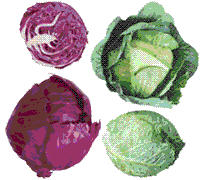 | Cabbage,green : the common market cabbage (Brassica olercaea) with a large, firm spherical head
of tightly packed pale green waxy leaves; flat and conical heads are also available; also known as the common cabbage. Other
varieties include white and red.
| | | Cacao : Native South American tree whose seeds are fermented and processed to make
cocoa and chocolate. | | | 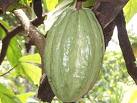 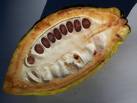
| | | Cacciatore : Italian for hunter and used to describe
any stew-like dish flavored with onions, herbs, mushrooms, tomatoes and sometimes wine (ex. Chicken cacciatore). | 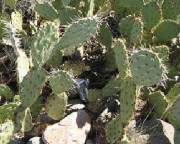 | Cactus : A cactus (plural:
cacti or cactuses) is any member of the spine plant family Cactaceae, native to the Americas.
They are often used as ornamental plants, but some are also crop plants. | 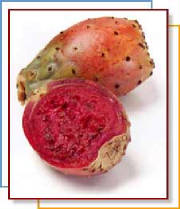 | Cactus Pear or Prikly Pear : Prickly pear cacti
typically grow with flat, rounded platyclades that are armed with two kinds of spines; large, smooth, fixed spines and small,
hairlike spines called glochids that easily penetrate skin and detach from the plant. Many types of prickly pears grow into
dense, tangled structures. >>>
| 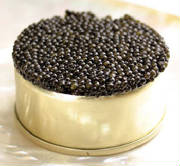 | Café (place) : is an informal restaurant offering a range of hot meals and made-to-order sandwiches. A café may also be licensed to serve alcohol. The term can also refer to bistro or a restaurant facility within a hotel. |  | Cake : in the United States, a broad range of pastries, including layer cakes,
coffee cakes and gateaux; it can refer to almost anything that is baked, tender, sweet and sometimes frosted. | 
| Cake_Flour : a low-protein wheat flour used for making cakes, pastry doughs and other tender
baked goods. | 
| Calabaza : is an old Spanish term that can be applied to a variety of gourds and melons. | 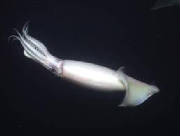 | Calamari : Small squid. |  | Calamondin or Kalamansi: A citrus tree cultivated for its naturally high concentration of
vitamin C. It also is used as a base for artificial flavorings. | 
| Calavo : The trade name for California Avocados. | 
| Caldillo : Poor man's stew made of ground beef, raw potatoes, and seasonings. | 
| Calorie : Unit of heat; 1 calorie = 3.968 B.T.U. . The heat required to raise 1 gram of water 1 degrees
centigrade. | | | Calvados : An apple brandy from Normandy, France made from cider that has been aged for up to two years
and distilled. |  | Canapés : Garnished bite-sized rounds of bread or vegetables (cucumber, zucchini) served
with cocktails and at buffets. |  | Candy : specifically sugar candy,
is a confection made from a concentrated solution of sugar in water, to which flavorings and colorants are added. |  | Candy_Thermometer : a kitchen tool used to determine heat levels in the cooking of candy, jams, and preserves. |  | Cane_Syrup : a thick, sweet syrup; the result of an intermediate step in the sugarcane refining
process when the syrup is reduced. |  | Cannellini : large, elongated kidney-shaped beans grown in Italy; have a creamy white color
and are used in soups and salads; also known as white kidney beans. |  | Canola : Canola is one of two cultivars of rapeseed ... Their seeds are
used to produce edible oil that is fit for human consumption because it has lower levels of erucic acid than traditional rapeseed
oils ... he name "canola" was derived from "Canadian oil, low
acid" ... |  | Can_Opener :...The first tin cans, invented in 1810, were heavy-weight containers that required
ingenuity to open, using knives, chisels or even rocks. Not until cans started using thinner
metal about 50 years later were any dedicated openers developed. ...
| 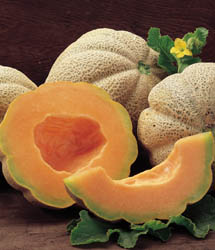 | Cantaloupe : a muskmelon with a raised netting over a smooth grayish-beige skin, pale orange
flesh, large seed cavity with many seeds and a sweet, refreshing, distinctive flavor; also known as a netted melon or nutmeg
melon. |  | Capellini : Italian for fine hair; used to describe extremely fine spaghetti. | 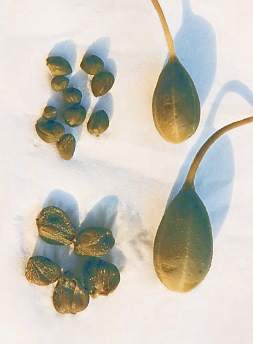 | Capers : the unopened flower buds of a shrub (Capparis spinosa) native to the Mediterranean
region; after curing in salted white vinegar, the buds develop a sharp salty-sour flavor and are used as a flavoring and condiment. Caper Blossom | Caper Flowers | | |
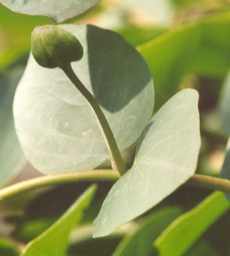 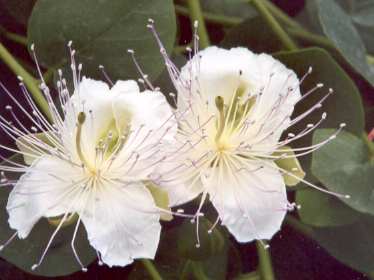 |  | Capon : a rooster castrated before it is 8 weeks old, fattened and slaughtered before
it is 10 months old; has a market weight of 4 to 10 pounds (1.8 to 4.5 kg), soft, smooth skin, a high proportion of light
to dark meat, a relatively high fat content and juicy, tender, well-flavored flesh. |  | Cappuccino : an Italian beverage made from equal parts espresso, steamed milk and foamed milk, sometimes
dusted with sweetened cocoa powder or cinnamon; usually served in a large cup. |  | Captain
: see Chef de Rang |  | Carambola : Also known as star fruit. A golden yellow fruit grown in the West Indies, Indonesia, and Brazil. When sliced, the
fruit has a star shaped .The flesh of the carambola is juicy and highly acidic. Its taste is reminiscent of plums, grapes,
and apples. It is eaten fresh, mostly in salsas and vinaigrettes, and sometimes as a dessert (with sugar and cream). |  | Caramel : 1. A substance produced by cooking sugar
until it becomes a thick, dark liquid; its color ranges from golden to dark brown; used for coloring and flavoring desserts,
candies; sweet and savory sauces and other foods.
2. A firm, chewy candy made with sugar, butter, corn syrup
and milk or cream. |  | Caramelize : to cook white sugar in a skillet over medium heat, stirring constantly, until
the sugar forms a golden-brown syrup. |  | Carbohydrates : the food group containing sugars, starches, and cellulose. |  | Carbonnades : a Belgian beef stew cooked with beer. | 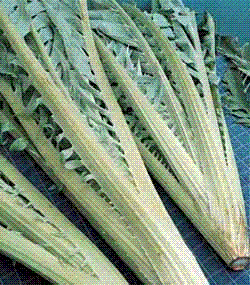 | Cardoon : The cardoon (Cynara cardunculus), also called the artichoke thistle,
cardone, cardoni, carduni or cardi is native to the Mediterranean, where it was domesticated
in ancient times. The
stalks, which look like large celery stalks, can be served steamed or braised. They have an artichoke-like flavor. Cardoons
are available in the market only in the winter months ... |  | CAREME :Marie Antoine (Antonin) known as "The King of
Chefs, and the Chef of Kings" |  |
Carrageen / Carraghen_Moss : an edible seaweed; Irish moss. |  | Carissa: ..The fruit is a plum-shaped berry, red to dark purple-black
in different species, 1.5-6 cm in length, and containing up to 16 flat brown seeds. The fruit are edible but tart, with strawberry or apple-like flavour, and rich in Vitamin C, calcium, magnesium and phosphorus.... | 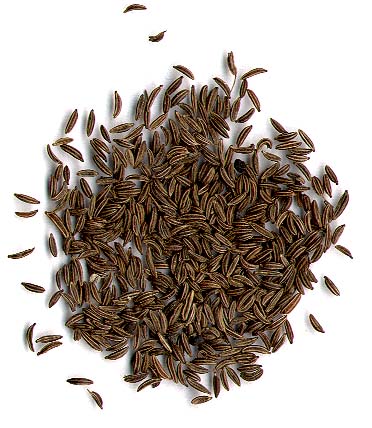 | Caraway : Caraway or Persian cumin is a native to Europe
and western Asia. The fruits, usually used whole, have a pungent, anise-like flavor and aroma . They are used as a spice in breads especially rye bread ...
| 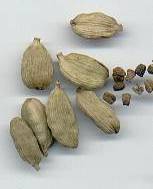 | Cardamom : Both forms of cardamom are used
as flavorings in both food and drink, as cooking spices
and as a medicine... Cardamom has a strong, unique taste, with an intensely aromatic fragrance. Black cardamom has a
distinctly more astringent aroma, though not bitter, with a coolness similar to mint ... <> Green Pod
| | Plant>> |
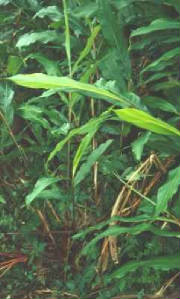
| 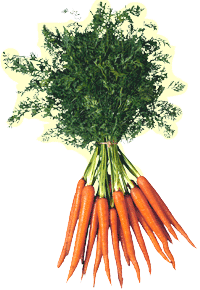 | Carrot : a member of the arsley family (Daucus carota); has lacy green foliage, an edible
orange taproot with a milk sweet flavor and crisp texture, a tapering shape and comes in a variety of sizes.
Carrot Cake ►
| | | 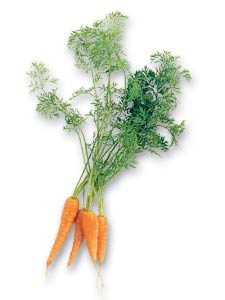 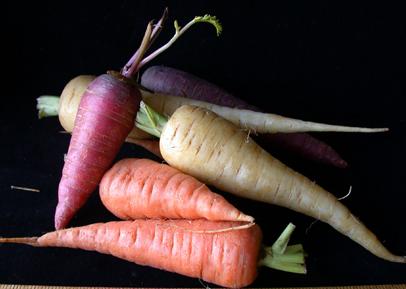 |  | Carte (à la) : is a French language loan phrase meaning "according to the menu", and it is used
as restaurant terminology in one of two ways... | 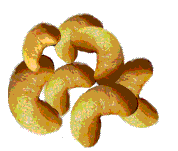 | Cashew : Originally spread from Brazil
by the Portuguese, the cashew tree is now cultivated in all regions with a sufficiently warm and humid climate. It is produced in around 32 countries of the world...
| 
| Casserole : an ovenproof baking dish, usually with a cover; also the food cooked inside
it. | 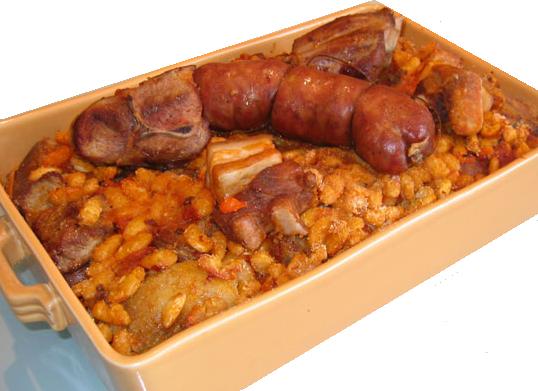 | Cassoulet : is a rich, slow-cooked bean stew or casserole originating in
the south of France, containing meat (typically porksausages, pork, goose, duck and sometimes mutton), pork skin and
white haricot beans. The dish is named after the cassole,
the distinctive deep round earthenware pot with slanting sides in which cassoulet is ideally cooked... |  | Caterer :..When most people refer to a "caterer", they are referring to an event
caterer who serves food with waiting staff at dining tables or sets up a self-serve buffet.
The food may be prepared on site, i.e., made completely at the event, or the caterer may choose to bring prepared food and
put the finishing touches on once it arrives.... |  | Cauliflower : a member of the cabbage family (Brassica oleracea); has a head (called
a curd) of tightly packed white florets (a purple variety is also available) partially covered with large waxy, pale green
leaves on a white-green stalk; some varieties have a purple or greenish tinge. | | Baby Cauliflower>> | 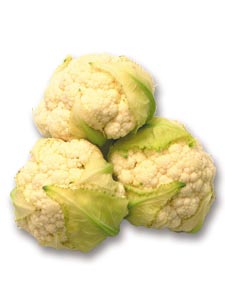 | 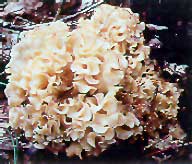 | Cauliflower Mushroom : or Sparassis is characterised by their unique look. Its look can be described as similar to a sea sponge, a brain, or a head of cauliflower, from which it has been given its popular name... | 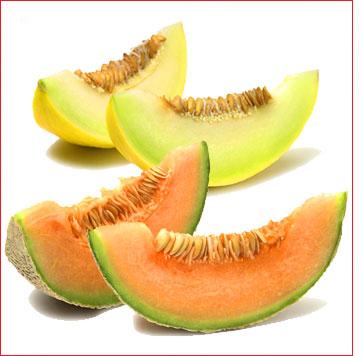 | Cavaillon
Melon : more melon
>>>
|  | caviar : the salted roe of sturgeon. Red caviar is the salted roe of salmon, and
considered a less desirable substitute. buy online ► | | Caviar d'Escargot>> | 
|  | Cayenne pepper : 1. A hot pungent peppery powder blended from various ground dried hot chiles
and salt, has a bright orange-red color and fine texture; also known as red pepper.
2. A dried thin, short chile with a bright red color, thin flesh and hot, tart acidic
flavor; usually used ground. | | | |  | Castor / Caster_Sugar : English term for superfine granulated sugar. | ca ce ch ci cl co cr cu back to top | 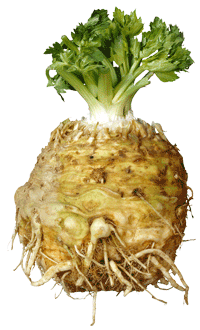 | Celeriac : is also known as 'celery
root,' 'turnip-rooted celery' or 'knob celery' Celeriac may be used raw or cooked. It has a tough, furrowed, outer surface which is usually sliced
off before use because it is too rough to peel. Celeriac has a celery flavor, and is often used as a flavoring in soups and
stews | 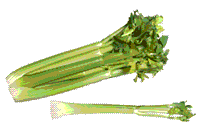 | Celery : developed in 16th-century Italy, this vegetable (Apium graveolens) grows in bunches
of long stringy curved stalks or ribs surrounding a tender heart; can be eaten raw, cooked or used as a flavoring. There are
two principal celery varieties; Pascal (which is pale green) and golden (which is creamy white). | | | | Greens | micro | | 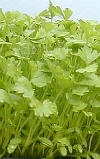 | 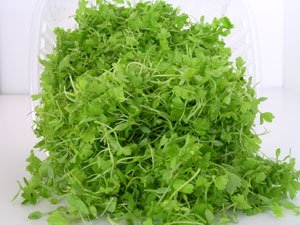 | |
|
|  | Celery_Salt : a seasoning blend of ground celery seeds and salt. |  | Celery_Seeds : the seeds of the herb lovage; they are small and brown and are used in pickling
and as a flavoring. | 
| Cellophane/glass noodles : Also known as bean thread noodles, these are made
from mung bean flour. They are usually softened by soaking in hot water for 10 -15 minutes before cooking with other ingredients |  | Celsius : (also known as centigrade) is a temperature scale that is named after
the Swedish astronomer Anders Celsius
(1701–1744) ... conversion tool ►
|  | Cèpe : Boletus edulis ; a delicious mushroom Most commonly known as porcini |  | Cereal : are cultivated for the edible components of their fruit seeds. Cereal grains are grown
in greater quantities and provide more food energy worldwide than any other type of crop... ...The word cereal derives from Ceres, the name of the Roman goddess of harvest and agriculture... | 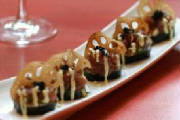 | Ceviche : (also spelled as cebiche or seviche)
is a form of citrus-marinated seafood appetizer, popular in mainly Latin American countries
like Peru, Panama, Ecuador, Mexico, Guatemala, Colombia, and Chile. Both finfish and shellfish are used; finfish is typically
raw while shellfish is typically cooked.... | Asian Style ^^ | Tuna
| Scallop
| 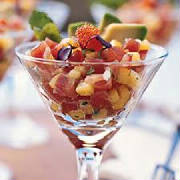 | 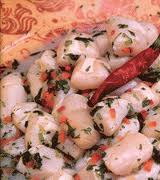 |
| ca ce ch ci cl co cr cu back to top |  | Chambrer
: a French term used to describe
the gradual raising of the temperature of wines from cool wine cellar to room temperature. Slightly warmer, the wine flavor is more pungent. | 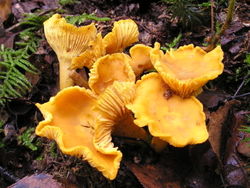 | Chanterelle Mushroom : The Golden
Chanterelle is probaly the best known of its species. It has a fruity smell reminiscent of apricots and a mildly peppery taste, and is
considered an excellent food mushroom. | Golden ▲
| | Black | Yellow Foot | 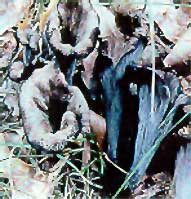 | 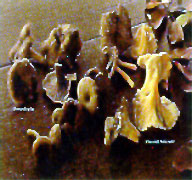 |
| 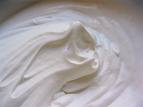
| Chantilly cream or Crème Chantilly is
a sweetened whipped cream, sometimes flavored with vanilla. It is said to have been invented by
François Vatel, maître d'hôtel at the Château de Chantilly in the 17th century. |  | Charcuterie : derived from the French words for flesh (chair) and cooked (cuit), or in
Italian Salumi (sing: salume), is the branch of cooking devoted to prepared meat products such as
bacon, ham, sausage, terrines, galantines, pâtés, and confit, primarily from
pork.[1]garde manger chef's repertoire. Originally intended
as a way to preserve meats before the advent of refrigeration, these preparations are prepared today for their flavors that
are derived from the preservation processes.... | 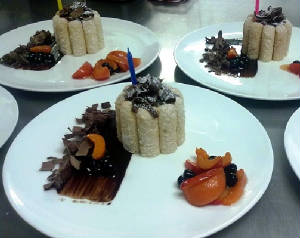 | Charlottes
: mold
of biscuits, sponge cake, ladyfinger, etc., or sliced bread, filled with a custard cream and fruits.
Recipe ►
| 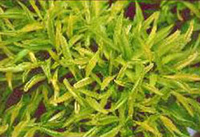 | Chartreuse : is a French liqueur composed of distilled
alcohol flavored with 130 herbal extracts.
|  | Chasseur
: game or poultry served ‘hunter
style’, with a rich red wine sauce, or a white wine sauce, including mushrooms and shallots. Recette ► |  | Chateau_Bottled : wine bottled at the château where it
was grown and made. Usually this means a superior wine, one with a distinct flavor of its own. Other wines are the result
of grapes grown in a region and brought together at the vintner’s for handling. The results are less distinguished,
though these regional wines may be very good. | 
| Chauquehue
: Blue corn meal much thicker than atole. Served
with red chile with pork or spareribs in place of potatoes or rice. | 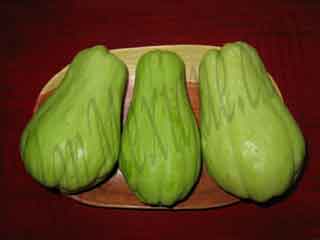 | Chayote : The chayote (Sechium edule), also known as sayote, tayota, choko, chocho, chow-chow, christophine, mirliton, and vegetable pear, is an edible plant that belongs to the gourd
family... |  | Cheddar : a firm cheese made from whole
cow's milk (generally pasteurized) produced principally in Wisconsin, New York and Vermont; ranges from white to orange in
color and its flavor from mild to very sharp |  | Cheese: dairy products made from milk
curds separated from the whey; numerous varieties are found worldwide. |  | Cheesecake : a rich, smooth dessert made
by blending cream cheese, cottage cheese or ricotta with sugar, eggs and other flavorings, then baking; usually prepared in
a springform pan dusted with cookie crumbs or ground nuts; the baked dessert is often topped with sour cream or fruit.
Recipes ► cheese cake fantaisy ► | 
| Chef (Celebrity) : listing
|  | Chef_de_Cuisine : A chef is a person who cooks professionally.
In a professional kitchen setting, the term is used only for the one person in charge of everyone else in the kitchen, the
executive chef... |  | Chef_de_Partie : ..also known as a "station chef" or "line
cook", is in charge of a particular area of production. In large kitchens, each station chef might have several cooks
and/or assistants... |  | Chef_de_Rang : The dining room is separated into sections called rangs. Each rang
is supervised by this person to coordinate service with the kitchen | 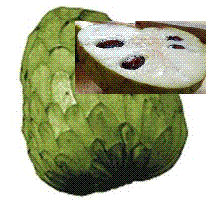 | Cherimoya : The name originates from the
Quechua word chirimuya, which means "cold
seeds," because the plant grows at high altitudes and the seeds will germinate at higher altitudes... The fruit
is fleshy and soft, sweet, white in color, with a sherbet-like texture, which gives it its secondary name, custard apple.... | 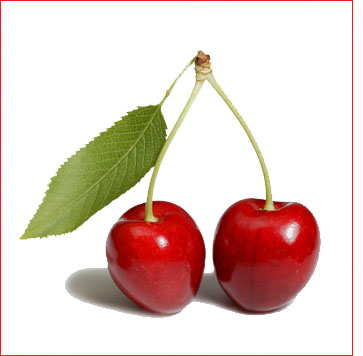 | Cherry : The word "cherry" comes from the French word "cerise", which comes in turn from the Latin words cerasum and Cerasus.... Recipes ►
| 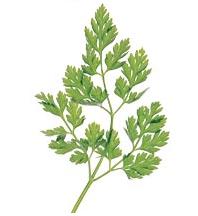 | Chervil : Sometimes
referred to as "gourmet's parsley", chervil is used to season poultry, seafood, and young vegetables. It is particularly
popular in France, where it is added to omelettes, salads and soups. More delicate than parsley, it has a faint taste of liquorice. | 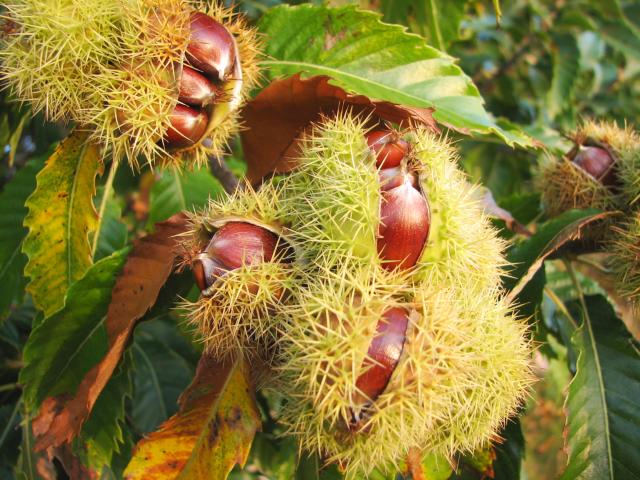 | Chestnut : The fruit can be peeled and eaten raw.. Another method of eating the fruit involves roasting
(which does not require peeling). As with any method of cooking
with the exception of boiling, roasting requires scoring the fruit beforehand to prevent undue expansion and "explosion"
of the fruit. Once cooked, its texture is similar to that of a baked potato, with a delicate, sweet, and nutty flavour....
Recipes ►
|  | Chewing_Gum : is a type of confection product,
or traditionally made of chicle, a natural latexsynthetic rubber known as polyisobutylene,... | 
| Chicharrones : (Cracklings) Pieces
of fat cooked slowly until lard is rendered out. Lightly salted, may be served as a warm or cold hor d'oeuvre. |  | Chicken : one of the principal USDA-recognized
kinds of poultry; any of several varieties of common domestic fowl used for food as well as egg production; has both light
and dark meat and relatively little fat. |  | Chicken_Broiler_fryer
: a chicken slaughtered when 13
weeks old; has a soft, smooth-textured skin, relatively lean flesh, flexible breastbone and an average market weight of 3.5
pounds (1.5 kg). |  | Chicken_Roaster : a chicken slaughtered when 3 to 5 months old;
has a smooth-textured skin, tender flesh, a less flexible breastbone than that of a broiler and an average market weight of
3.5 to 5 pounds (1.5 to 2 kg). | 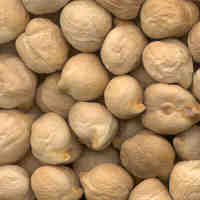 | Chickpea : native to the Mediterranean
region; has a buff color, firm texture and nutty flavor; used in Mediterranean and Middle Eastern cuisines in soups, stews and salads, it is also roasted and eaten as a snack;
also know as ceci and garbanzo beans .
Dried chick peas need a long cooking time (1-2 hours) but will
not easily fall apart when cooked longer. If soaked for 12-24 hours before use, cooking time can be considerably shortened
(30 mins). Mature chickpeas
can be cooked and eaten cold in salads, cooked in stews, ground into a flour.. Many popular Indian dishes are
made with chickpea flour.. In India unripe chickpeas are often picked out of the pod and eaten as a raw
snack and the leaves are eaten as a green vegetable in salads... | | | | Flower | Seeds | 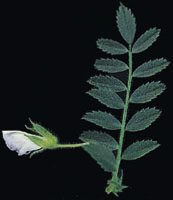 | 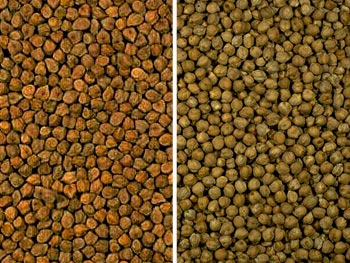 |
| 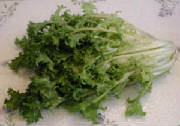 | Chicory Green : | 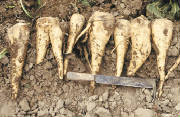 |
Chicory Root : The cultivated forms are grown
for their leaves (var. foliosum), or for the roots (var. sativum), which are baked, ground, and used as a coffee substitute
and additive Chicory
may be grown for its leaves, eaten raw as a salad. It is generally divided into three types of which there are many varieties;
Radicchio / Sugarloaf / Belgian Endive | 
| Chicos : Dried sweet corn used whole or crushed in a seasoned stew. | 
| Chiko Roll : is an Australian savoury snack
.... It was inspired by the Chinese egg roll and spring rolls and was designed to be able
to be eaten with one hand whilst drinking a beer with the other. The Chiko roll consists of boned mutton, celery, cabbage, barley, rice, carrot and spices in a tube of egg, flour and dough which is then deep-fried. |  | Chiffonade : finely cut vegetable strips
used to garnish soups, raw, or simmered in butter. Lettuce and sorrel often are used in this manner. | 
| Chilaquilles : Called tortilla hash or poor
man's dish. Includes leftover tortillas fried until crisp and combined with chile, eggs, jack or sharp cheddar cheese, and
red chile sauce. |  | Chili_(Chile)_Powder : pure ground dried chiles; depending on the
variety used, its flavor can range from sweet and mild to pungent and extremely hot and its color from yellow-orange to red
to dark brown; used as a flavoring. | 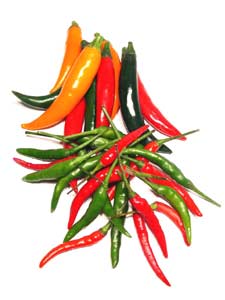 | Chili_Pepper ; Though chilis may be thought of as a vegetable, their culinary use is generally as a spice.
It is the fruit that is usually harvested... They originate in the Americas; they are now grown
around the world because they are widely used as spices or vegetables in cuisine, and as medicine... Chili; Chili (Chile) Pepper; Hot Pepper - the fruit of various plants of the capsicum family; a chile can have a mild to
fiery hot flavor (caused by the capsaicin in the pepper's placental ribs) with undertones of various fruits or spices. A fresh chile is usually yellow, orange, green or red, and its shape can range from thin, elongated
and tapering to conical to nearly spherical; a dried chile, which is sometimes referred to by a different name than its fresh
version, is usually more strongly flavored and darker colored. | 
| Chile Caribe : Red chile pods blended with water to a puree and seasoned. Used in such
dishes as carne adovada. | 
| Chile
Con Queso : Melted cheese dip
seasoned with chile and served with tostados. |  | Chiles_Rellenos : hot green peppers stuffed with cheese and dipped
in batter and fried. |  | Chilled
: a food that has been refrigerated,
usually at temperatures of 30 to 40*F(-1 to +4*C). |  | Chipotle : a dried, smoked jalapeño; this medium-sized chile has a dull tan to dark brown color with a wrinkled skin and a smoky, slightly sweet, relatively
milk flavor with undertones of tobacco and chocolate. |  | Chipolata : common name for a tiny sausage,
this originally described a garnish of chestnuts, glazed vegetables, and small sausages. |  | Chitterlings : part of the small intestine
of a pig, cooked. | 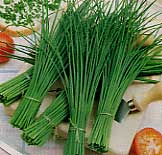 | Chives : the smallest species of the onion family. They are referred to only in the plural, because
they grow in clumps rather than as individual plants.... | 
| Chocolate : roated, ground, refined cacao
beans used as a flavoring, confection or beverage
Recipes ►
|  | Chocolate_White : a confection made of cocoa butter,
sugar and flavorings; does not contain cocoa solids. Mousse ►
| 
| Cholesterol : ..Although cholesterol is essential for life, high levels
in circulation are associated with atherosclerosis. ..The name cholesterol originates from the Greek chole-bile) and
stereos (solid), and the chemical suffix -ol for an alcohol,... ( |  | Chop : to cut into pieces of roughly
the same size, either small (finely chopped) or larger (coarsely chopped). Also, rib section of beef, lamb, pork, or other animals. |  | Chopsticks : ..are a pair of small, equal-length, tapered sticks. They
are used as the traditional eating utensils of China, Japan, Korea, Taiwan, and Vietnam. Generally believed to have originated
in ancient China, they can also be found in some areas of Tibet and Nepal that are close to Han Chinese populations.... |  | Chorizo : Spanish chorizo is made from coarsely chopped
pork and pork fat, seasoned with smoked pimentón (paprika) and salt. It is generally classed as either picante
(spicy) or dulce (sweet), depending upon the type of smoked paprika used. There are hundreds of regional varieties
of Spanish chorizo, both smoked and unsmoked... | 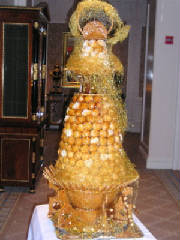 | Choux_Pastry : Also called choux paste, pâte à
choux and cream-puff pastry, this special pastry is made by an entirely different method from other pastries. The dough, created by combining flour with boiling
water and butter, then beating eggs into the mixture, is very sticky and pastelike. During baking, the eggs make the pastry
puff into irregular domes (as with cream puffs). After baking, the puffs are split, hollowed out and filled with a custard,
whipped cream or other filling. Besides cream puffs , choux pastry is used to make such specialties as éclairs,
gougère and profiteroles. Recipes ►
| | | Profiteroles
| Eclairs
| 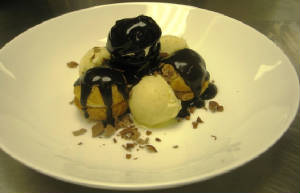 | 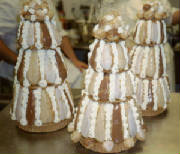 |
|  | Chowder : ..The most accepted etymology for the word chowder comes from the pot in which it is cooked. The French word chaudron translated means "a pot," developed from chaud, "hot" (also related to the Latin calderia and English cauldron). The word "chowder"
is a New England word that came from Newfoundland, where Breton fishermen — who would throw portions of the day's catch
and other available foods into a large pot... | | 
| Chutney : from the Hindi chatni,
it is a condiment made from fruit, vinegar, sugar and spices; its texture can range from smooth to chunky and its flavor from mild to hot. | ca ce ch ci cl co cr cu back to top | 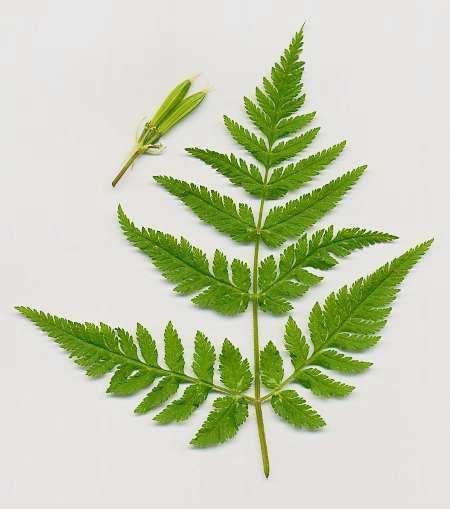
|
Cicely : Its leaves are sometimes used
as a herb, with a rather strong taste reminiscent of anise; it is used mainly in Germany and Scandinavia. Like its relatives
anise, fennel, and caraway, it can also be used to flavor aquavit. |  | Cider_Vinegar : vinegar of unprocessed apple cider. | 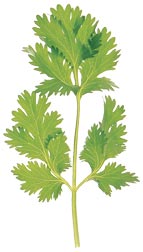 | Cilantro : also known as Chinese parsley. The leaves have a very different taste from the seeds, with citrus-like overtones.
Some people perceive an unpleasant "soapy" taste or a rank smell and avoid eating the leaves.. The fresh leaves are an essential ingredient in many South Asian foods (particularly chutneys), in Chinese dishes and
in Mexican salsas and guacamole... | 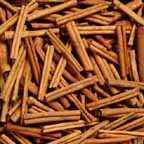 | Cinnamon : native to Sri Lanka and
India; Cinnamon bark is widely used as a spice. It is principally employed
in cookery as a condiment and flavoring material.... | | | | 
|
Cinnamon Cup Mushroom : or Crucibulum ; Fruiting bodies light tan to cinnamon-colored, cup- or crucible-shaped, and typically
1.5–10 mm wide by 5–12 mm tall.
|  | Citric_Acid : an organic acid common to citrus fruits and used in preserving,
retaining color or flavoring drinks . |  | Citron
: a fruit likened to an overgrown
knobbly lemon, it is famed for its peel, which is used in marmalades, candies and fruit cakes. | ca ce ch ci cl co cr cu back to top | 
| Clarified_Butter : butter that has been melted and chilled. The
solid is then lifted away from the liquid and discarded. |  | Clarify
: to make a liquid clear and free
of sediment. Clarification heightens the smoke point of butter. Clarified butter will stay fresh in the refrigerator for at
least 2 months. | 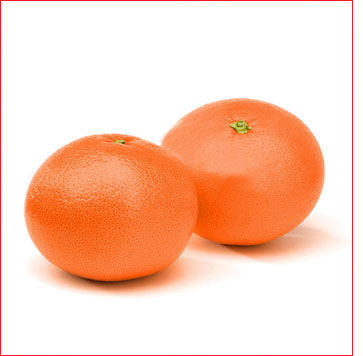 | Clementine : ..Clementines separate easily
into eight to fourteen juicy segments. They are very easy to peel, like a tangerine, but lack the tangerine's seeds. Clementines are also known as seedless tangerines, although
occasionally they do contain seeds... |  | Cloche
: A restaurant's bell-shaped cover for a plate of food, to retain warmth | 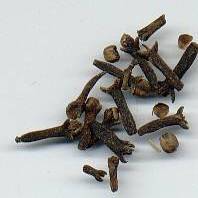 | Clove : .. native to Indonesia and used
as a spice in cuisine all over the world. The English name derives from Latin clavus 'nail' (also
origin of French clou 'nail') as the buds vaguely resemble small irregular nails in shape. .. Cloves can be used in cooking either whole or in a ground form, but as they are extremely strong,
they are used sparingly... | Fresh >> | 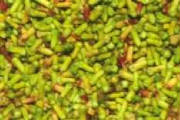 | ca ce ch ci cl co cr cu back to top |  | Coarsely_Chop
: to cut food into small pieces,
about 3/16 inches (1/2 cm) square. |  | Coat : to cover a food completely with an outer "coating" of another food or ingredient. |  | Cocoa_Powder
: a brown, unsweetened powder produced
by crushing cocoa nibs and extracting most of the fat (cocoa butter); it is used as a flavoring; also known as unsweetened cocoa. Cocoa Powder, Dutch process - coca powder that has been treated
with an alkali to neutralize its natural acidity; darker and milder than a nonalkalized powder. |  | Cobbler : a deep-dish fruit pie with a top crust of biscuit dough.
Recipe ►
Also, a tall drink made of rum,
whiskey or claret and garnished with citrus slices or mint or fennel. |  | Cockle
: a small mollusk related to the
oyster, usually eaten boiled with condiments or in a sauce. |  | Cocktail : an appetizer (fotos) ; either a beverage or a light, highly seasoned food served before meal. | 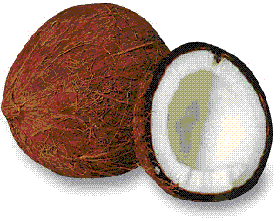 | Coconut : The term coconut refers to the seed of the
coconut palm. An alternate spelling is cocoanut. The coconut
palm is grown throughout the tropical world, for decoration as well as for its many culinary and non-culinary uses; virtually
every part of the coconut palm has some human uses... |  | Coconut_dried : the shredded or flaked flesh of the coconut; often sweetened;
also known as copra. |  | Coconut_Milk_&_Cream
: Are sometimes called for in recipes,
particularly in curried dishes. Coconut
milk is made by combining equal parts water and shredded fresh or desiccated coconut meat and simmering until foamy. The mixture
is then strained through cheesecloth, squeezing as much of the liquid as possible from the coconut meat. The coconut meat can be combined with water
again for a second, diluted batch of coconut milk. Coconut cream is made in the same manner, but enriches the mix by using
1 part water to 4 parts coconut. Milk can be substituted for water for an even richer result. Discard the coconut meat after
making these mixtures. Coconut
milk and cream also come canned and may sometimes be found frozen in Asian markets and some supermarkets. Do not
confuse sweetened "cream of coconut", used mainly for desserts and mixed drinks, with unsweetened coconut milk or cream. |  | Cod : a large family of saltwater fish, including Atlantic cod,
Pacific cod, pollock, haddock, whiting and hake; generally, they have a milk, delicate flavor, lean, white flesh and a firm
texture and are available fresh, sun-dried, salted or smoked. |  | Coddling
: gently
poaching in barely simmering liquid. |  | Coleslaw : a salad of Dutch origin made from shredded cabbage and sometimes
onions, sweet peppers, pickles and/or bacon bound with a mayonnaise, vinaigrette or other dressing and sometimes flavored with herbs. | 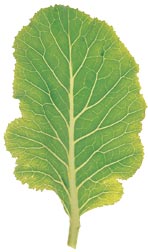 | Collard_Greens : The plant
is commercially cultivated for its thick, slightly bitter edible leaves... For best flavor and texture, the leaves should be picked before they reach their maximum
size... They are often prepared with other similar green leaf vegetables, such as kale, turnip greens, spinach,
and mustard greens in "mixed greens" |  | Combine : to mix two or more ingredients together. |  | Commis
: A commis is an apprentice in larger kitchens that works under a chef
de partie in order to learn the station's responsibilities and operation. This may be a chef who has recently
completed formal culinary training or is still undergoing training |  | Compote : Compote is a dessert made of whole or pieces of fruit in
sugar syrup. Whole fruits are immersed in water and with sugar and spices added to the dish, over gentle heat ... |  | Condiments : seasonings that enhance the flavor
of foods with which they are served. |  | Confection : Confectionery is the set of food items that are rich in sugar ... Confectionery
items include sweets, lollipops, candy bars, chocolate, Cotton candy, and other sweet items of snack food. The term does not
generally apply to cakes, biscuits, or puddings which require cutlery to consume, although exceptions such as petit fours
or meringues exist. |  | Confectioners'_Sugar : refined sugar ground into a
fine, white, easily dissolved powder; also known as powdered sugar and 10X sugar. |  | Confit : (French) is a generic term for various kinds of food that have
been immersed in a substance for both flavor and preservation. Sealed and stored in a cool place, confit can last for several
months. Confit is one of the oldest ways to preserve food and is a speciality of southwestern France. The word comes from the French verb confire (to preserve),
which in turn comes from the Latin word (conficere),
meaning "to do, to produce, to make, to prepare." The French verb was first applied
in medieval times to fruits cooked and preserved in sugar. Apple Confit ►
|  | Confiture : or Fruit preserves refers to fruits or vegetables that
have been prepared and canned for long term storage. The preparation of fruit preserves traditionally involves the use of
pectin as a gelling agent, although sugar or honey may be used as well. | 
| Consommé : clear broth that is made from fish, meat
or vegetables
|  | Convection_Cooking
: convection ovens use a small
fan in the rear of the oven to circulate air all around the food to cook it quickly and more evenly. Cooking times are generally reduced by 25%. Most manufacturers suggest that you reduce the cooking
temperature given in the recipe by 25 degrees and bake it for the time specified. |  | Convection_Oven : an electric oven in which heat is circulated
rapidly around the cooking foods by means of a fan, resulting in fast crisping and browning. | 
| Converted_Rice
: rice that is pressure-steamed and dried before milling to remove surface starch and help
retain nutrients; has a pale beige color and the same flavor as white rice; also known as parboiled rice. |  | Cook : A cook is a person that prepares food for consumption ...
A cook is sometimes referred to as a chef, although within the professional kitchen, the terms are not exchangeable. The executive
chef or sous chef is generally never referred to as a "cook" ... |  | Cookie_Cutter : is a tool to cut out cookie dough
in a particular shape. They are often used for seasonal occasions when well-known decorative shapes are desired, or for large
batches of cookies where simplicity and uniformity are required. Cookie cutters have also been used for, among other uses,
cutting and shaping tea sandwiches. |  | Cookie_Sheet : see cookware |  | Cookies : In the United States and Canada, a cookie is a small, flat-baked treat, containing milk, flour, eggs, and sugar,
etc. In most English-speaking countries outside North America, the most common word for this is biscuit; in many regions both terms are used, while in others the two words
have different meanings—a cookie is a plain
bun in Scotland,[1] while in the United States a biscuit is a kind of quick bread similar
to a scone. some ►
|  | Cooking : Cooking is the process
of preparing food by applying heat, selecting, measuring and combining of ingredients in an ordered procedure for producing
safe and edible food .
The process encompasses a vast range of methods, tools and combinations of ingredients to alter the flavor, appearance, texture,
or digestibility of food. Factors affecting the final outcome include the variability of ingredients, ambient conditions,
tools, and the skill of the individual doing the actual cooking. |  | Cookware : and bakeware are types of
food preparation containers commonly found in the kitchen. Cookware comprises cooking vessels, such as saucepans and frying
pans, intended for use on a stove or range cooktop. Bakeware comprises cooking vessels intended for use inside an oven. Some
utensils are both cookware and bakeware. |  | Cool : |  | Cooling_Rack
: |  | Coq_au_Vin : is a French fricassee of rooster cooked with wine, lardons, mushrooms, and
optionally garlic. Older roosters are traditionally used because they contain a lot of connective tissue, which creates a
richer broth when cooked ... Pot Pie ►
|  | Coral
: Scallops are a popular type of shellfish in both Eastern and Western cooking.
They are characterised by having two types of meat in one shell: the adductor muscle, called "scallop" which is
white and meaty, and the roe, called "coral", which is red or white and soft. |  | Cordon_Bleu : two slices of Wiener Schnitzel (or one with a pocket) filled with cheese and a slice of ham Le Cordon Bleu, international group of hospitality
management and cooking schools teaching French cuisine |  | Core : The single seed in the center of a cherry,
peach, plum, olive, avocado or other fruit center like apple or pear |  | Corked / Corky : Cork taint is a broad
term referring to a wine fault characterized by a set of undesirable smells or tastes found in a bottle of wine, especially
spoilage that can only be detected after bottling, aging and opening ... | 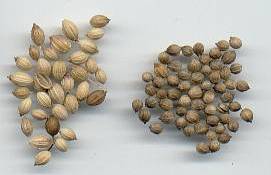 | Coriander : It is also known as cilantro, particularly in
the Americas. Coriander is native to southwestern Asia and west to North Africa ... All parts of the plant are
edible, but the fresh leaves and the dried seeds are the most commonly used in cooking. | Coriander >>>
| | Vietnam | Long Plant | 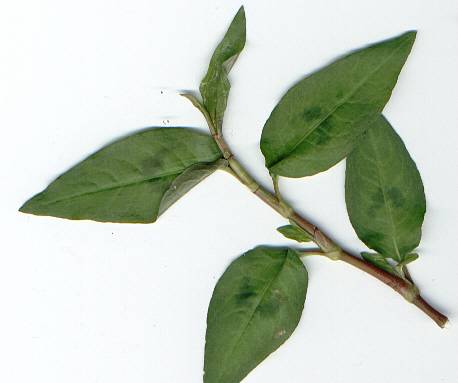 | 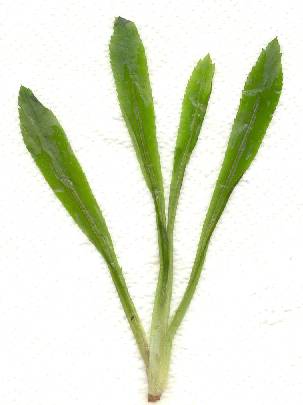 |
| 
| Corn : Sweet corn , also
called indian corn, sweetcorn, sugar corn, pole corn, or simply corn, is a variety of maize with a high sugar content... | | | | Mini | Yellow | Blue
| Strawberry | Indian | 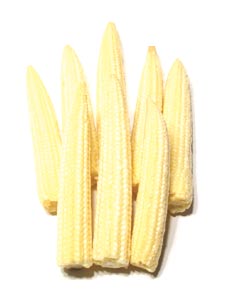 | 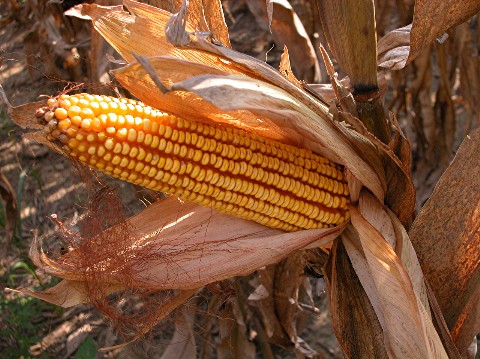 | 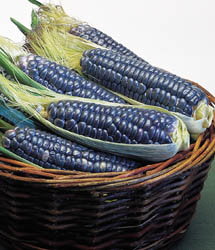 | 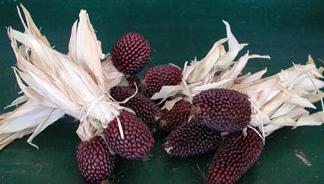 | 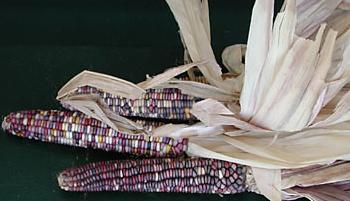 |
|  | Corn_Flour
: may be: - Cornmeal, flour ground from dried corn
- Cornstarch, the white, powdered starch of the maize
grain; in UK usage, cornflour normally has this particular meaning.
- Masa harina, the flour of hominy
- Wheaten starch,
in Australia.
|  | Corn_Oil : is oil extracted from the germ of corn (maize). Its main use is in cooking, where its high
smoke point makes refined corn oil a valuable frying oil. It is also a key ingredient in some margarines.
Corn oil has a milder taste and is less expensive than most other types of vegetable oils. | 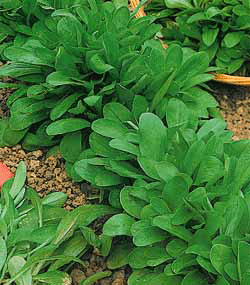 | Corn Salad : Like other formerly foraged
greens, corn salad has many nutrients, including three times as much Vitamin C as lettuce, beta-carotene, B6, B9, Vitamin
E, and omega-3 fatty acids. | 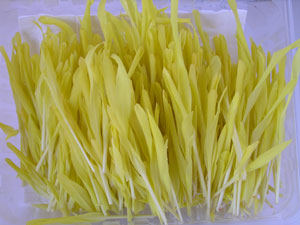 | Corn
Shoots :
|  | Corn_Syrup : is a syrup, made using cornstarch
as a feedstock, and composed mainly of glucose. A series of two enzymatic reactions are used to convert the corn starch to
corn syrup. Its major uses in commercially-prepared foods are as a thickener, sweetener, and for its moisture-retaining
properties which keep foods moist and help to maintain freshness. |  | Corned
: The "corn" in "corned beef" refers to the "corns"
or grains of coarse salts used to cure it. |  | Corned_Beef : In the U.S. and Canada, corned beef has two meanings.
One refers to a cut of beef (usually brisket, but sometimes round or silverside) cured or pickled in a seasoned brine. The
other use of the term refers to a tinned product generally found with canned goods on supermarket shelves |  | Cornichon : The Gherkin (French cornichon) is a fruit
similar in form and nutritional value to a cucumber. They are usually picked when 3 to 8 cm (1 to 3 in) in length and
pickled in jars or cans with vinegar (often flavoured with herbs, particularly dill) or brine to become a pickled cucumber. |  | Cornmeal : is flour ground from dried corn . In the United States
it is also called cornflour. (In the United Kingdom,
the word cornflour denotes cornstarch.) |  | Cornstarch : or cornflour, is
the starch of the corn (maize) grain ... It is also used as a thickening agent in soups and liquids ...
|  | Cotriade : (Kaoteriad in Breton) is
a fish stew specialty from the French province of Brittany that is made with different kinds of fish, as well as potatoes. |  | Coulis : is a form of thick sauce made from
puréed and strained vegetables or fruits. |  | Coulibiac : in French cuisine, is a fish
pie made with salmon or sturgeon combined with buckwheat, hard-boiled eggs, mushrooms, scallions, wine, herbs, and spices,
and served in a brioche or puff pastry, and served as a first or main course. It can be large or small, and is classically
oval in shape ... Russian origin ... |  | Court_Bouillon : is a flavored
liquid for poaching or quick-cooking foods. Nowadays, it is usually mentioned in connection with fish and seafood, but it
is also used for poaching vegetables, eggs, and delicate meats such as cockscombs, sweetbreads, and the like ...
|  | Couscous : Couscous
or kuskus as it is known in Morocco, Algeria, Tunisia, Libya and Egypt ... Couscous is traditionally
served under a meat or vegetable stew. It can also be eaten alone, flavoured or plain, warm or cold, as a dessert or a side
dish. | ca ce ch ci cl co cr cu back to top | | | Crab: | | | | | | | 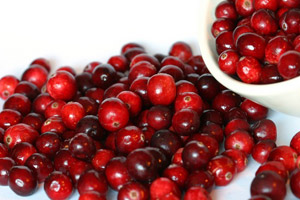 | Cranberry : are low, creeping shrubs or vines up
to 2 m long and 5 to 20 cm in height ... Cranberries are a major commercial crop in certain American states and
Canadian provinces ... Most cranberries are processed into products such as juice, sauce, and sweetened dried cranberries
(e.g. Craisins) ... Cranberry sauce is regarded an indispensable part of traditional American and Canadian Thanksgiving menus
and European winter festivals. | 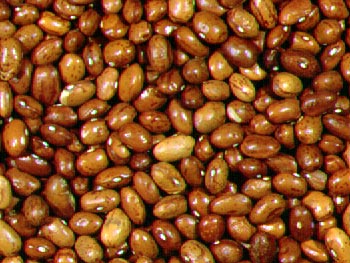 | Cranberry Beans :
|  | Crayfish : crawfish, or crawdads
are freshwater crustaceans resembling small lobsters, to which they are related ... The name "crayfish" comes from
the Old French word escrevisse (Modern French écrevisse) |  | Cream : Cream (including light
whipping cream) is a dairy product that is composed of the higher-butterfat layer skimmed from the top of milk before
homogenization ... Cream is used as an ingredient in many foods, including ice cream, many sauces, soups, stews, puddings,
and some custard bases, and is also used for cakes. Irish cream is an alcoholic liqueur which blends cream with whiskey and
coffee ... | 
| Cream_to : Creaming is used to refer
to several different culinary processes. |  | Cream_Cheese : is a sweet, soft, mild-tasting, white cheese, defined by the US Department
of Agriculture as containing at least 33% milkfat ... Cream cheese is not naturally matured and is meant to be consumed
fresh ... the first cream cheese was made in New York in 1872 by an American dairyman William Lawrence. In 1880, ‘Philadelphia’
was adopted as the brand name, after the city that was considered at the time to be the home of top quality food. |  | Cream_Puff : A profiterole or cream puff is
a popular choux pastry. Choux paste is baked into small round puffs that are served cold with a sweet filling and sometimes
a topping. The usual fillings are whipped cream and pastry cream, however cream containing alcohol is not uncommon. The puffs
may be left plain or cut to resemble swans or decorated with chocolate sauce, caramel, or a dusting of powdered sugar.
Recipes ► |  | Cream_Whipped : The term "whipped cream" refers to cream that has
been beaten until it is light and fluffy ... Cream containing 30% or more fat can be mixed with air ... |  | Cream_of_Tartar : Potassium bitartrate, also known as potassium
hydrogen tartrate, has formula KC4H5O6. It is a byproduct of winemaking. In cooking
it is known as cream of tartar. It is the potassium acid salt of tartaric acid. |  | Crème_Fraîche : is the Western European counterpart to sour
cream. Originally a French product, today it is available in many countries. It is traditional to France, Belgium, the Netherlands,
and the Scandinavian countries... Crème fraîche is a soured cream containing about 28% milk fat. It is slightly
soured with bacterial culture, but is less sour, and thicker, than sour cream. |  | Crêpes : While
crêpes originate from Brittany, a region in the northwest of France, their consumption is nowadays widespread in France
and it is considered a national dish. In Brittany, crêpes are traditionally served with cider. Crêpes
are served with a variety of fillings, from the most simple with only sugar to flambéed crêpes Suzette or elaborate
savoury fillings. Recipes ►
| 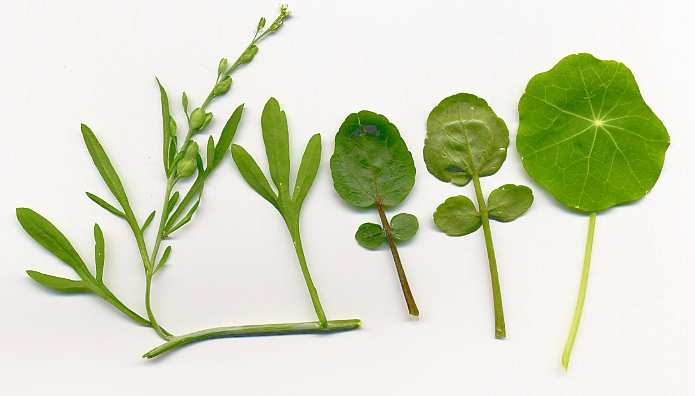 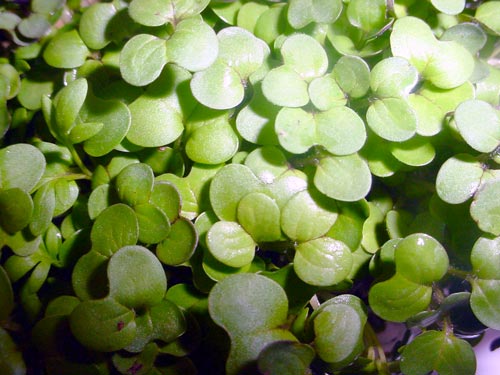
|
Cresses : | 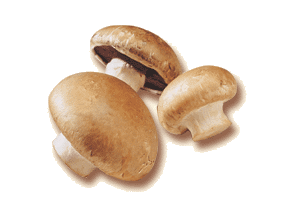 | Crimini Mushroom : Agaricus bisporus is known by many names, several of which refer
to different stages: "button mushroom" when sold, collected, or eaten in young, unopened form, "crimini mushroom"
or "baby bella" as an immature portobello, or "portobello mushroom" as a large, brown, mature mushroom.
It is known as the champignon de Paris in France. It is also often called simply "champignon" (the
french word for "mushroom") in several languages. |  | Crimping : Grain crimping or moist
grain crimping is an agricultural technology, an organic way to preserve feed grain into livestock fodder by fermentation.
Crimped grain brings health benefits to the animals and economical
benefits such as cost savings and increased meat or milk production to the farmer. |  | Croissant : a buttery flaky pastry, named
for its distinctive crescent shape. It is also sometimes called a crescent or crescent roll. Croissants are made of a leavened variant of puff pastry by layering
yeast dough with butter and rolling and folding a few times in succession, then rolling. .................. Origin Recipe ► |  | Crookneck_Squash : yellow crookneck
squash is a variety of summer squash (species Cucurbita pepo) with bumpy, yellow skin and sweet flesh. The taste is closer to
winter squashes than to summer squashes, although it is a short-season bearer. |  | Croquette : A croquette is a small fried
food roll containing usually as main ingredients mashed potatoes, and/or minced meat (veal, beef, chicken, or turkey), shellfish,
fish, vegetables, and soaked white bread, egg, onion, spices and herbs, wine, milk ... The croquette (from the French
croquer, “to crunch”) was a French invention that gained world-wide popularity, both as a delicacy and
as a fast food. Sweet Cromesquis & Beignets ►
| 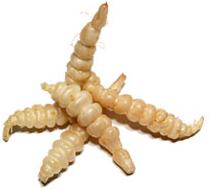 | Crosnes : The flavor of the tubers is delicate and delicious — they can
be treated as jerusalem artichokes in cooking. It is used as a vegetable, in salad compositions, but more so as a garnish. |  | Croûtons : are small pieces of sautéed or
rebaked bread, often cubed and seasoned, that is used to add texture and flavor to salads, notably the Caesar salad, as an
accompaniment to soups, or eaten as a snack food. The word crouton is derived from the French croûton, itself
derived from croûte, meaning "crust". |  | Crudités : are traditional French appetizers comprising
sliced or whole raw vegetables which are dipped in a vinaigrette or another dipping sauce. Crudités often include celery
sticks, carrot sticks, bell pepper strips, broccoli, cauliflower, and asparagus spears. |  | Cruller : A traditional cruller
(or twister) is a twisted, oblong, fried pastry made of dough somewhat like that of a cake doughnut, often
topped with plain powdered sugar; powdered sugar mixed with cinnamon; or icing. The name can also refer to the French cruller, a fluted, ring-shaped doughnut made
from choux pastry with a light airy texture. |  | Crumb : Breadcrumbs or bread crumbs
(regional variants: breading, crispies) are small particles of dry bread, which are used for breading or crumbing foods, topping
casseroles, stuffing poultry, thickening stews, and adding inexpensive bulk to meatloaves and similar foods. |  | Crumpet : a savoury/sweet bread snack
made from flour and yeast. It is eaten mainly in the United Kingdom, but also in the nations of the Commonwealth. |  | Crustacean : (Crustacea) are a very
large group of arthropods, comprising almost 52,000 described species ... They include various familiar animals, such
as crabs, lobsters, crayfish, shrimp, krill and barnacles. The majority of them are aquatic, living in either
marine or fresh water environments, but a few groups have adapted to life on land, such as terrestrial crabs, terrestrial
hermit crabs and woodlice. Crustaceans are among the most successful animals, and are as abundant in the
oceans as insects are on land. |  | Crystallize : the (natural or artificial) process of formation of solid crystals precipitating
from a solution, melt or more rarely deposited directly from a gas. Crystallization is also a chemical solid-liquid separation
technique, in which mass transfer of a solute from the liquid solution to a pure solid crystalline phase occurs. | ca ce ch ci cl co cr cu
back to top |  | Cube_Steak : a cut of beef, usually top round
or top sirloin, tenderized by fierce pounding with a meat mallet, or use of an electric tenderizer... his is the most common
cut of meat used for chicken fried steak. | 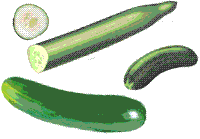 | Cucumber : a creeping vine that roots in the ground and grows up trellises
or other supporting frames, wrapping around ribbing with thin, spiraling tendrils. The plant has large leaves that form a
canopy over the fruit.
| 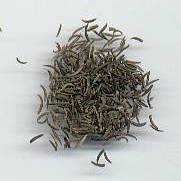 | Cumin : The English "cumin"
derives from the French "cumin", which was borrowed indirectly from Arabic
Kammon via Spanish comino during the Arab rule in Spain in the 15th century... Cumin seeds resemble caraway seeds, being oblong
in shape, longitudinally ridged, and yellow-brown in color, like other members of the Umbelliferae
family such as caraway, parsley and dill... | | | 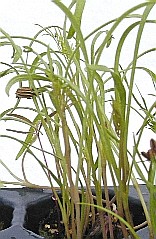 |  | Cupcake : In the early 19th century, there were two different uses for the name "cup cake"
or "cupcake". In previous centuries, before muffin tins were widely available, the cakes were often baked in individual pottery cups, ramekins, or molds and took their name from the cups they were baked in The other kind of "cup cake" referred to a cake whose ingredients were measured by volume,
using a standard-sized cup, instead of being weighed. Recipes whose ingredients were measured using a standard-sized cup could
also be baked in cups |  | Curaçao : a liqueur flavored with the dried peels of the laraha citrus fruit,
grown on the island of Curaçao. A non-native plant similar to an orange... |  | Curd : a dairy product obtained by curdling (coagulating) milk
with rennet or an edible acidic substance such as lemon juice or vinegar and then draining off the liquid portion (called
whey). |  | Curing : refers to various food preservation and
flavoring processes, especially of meat or fish, by the addition of a combination of salt, sugar, nitrates or nitrite. Many
curing processes also involve smoking. |  | Curry : is the English description of any of a general variety of spiced dishes, best
known in Asian cuisines, especially South Asian cuisine. Curry powder, also known as masala powder, is a spice mixture of widely varying composition developed by
the British during the days of the Raj as a means of approximating
the taste of Indian cuisine at home. | | | 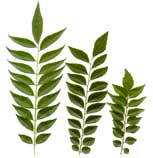 Curry Leaves
| Powder |  | Custard : a range of preparations based on milk and eggs. Most commonly, custard
refers to a dessert or dessert sauce, but custard bases are also used for quiches and other savoury foods. As a dessert, it
is made from a combination of milk or cream, egg yolks, sugar, and vanilla. Sometimes flour, corn starch, or gelatin are also
added. Recipes ►
|  | Customer : also client, buyer or purchaser is the buyer or
user of the paid products of an individual or organization, mostly called the supplier or seller. |  | Cut : see also all the other meanings of the word |  | Cut_in_/_to
|  | Cutlery : refers to any hand implement used in preparing, serving, and especially
eating food in the Western world. | 
| Cutlet : (derived from French côtelette, côte
("rib")) refers to: - a thin slice of meat from
the leg or ribs of veal, pork, or mutton (also known in various languages as a côtelette, Kotelett,
or cotoletta.)
- a fried cutlet
- a croquette made of minced meat
- various preparations using fried cutlets
or croquettes
| | _______________ | ____________________________________________________________________________________________ |
| | | | | | | ________________________________________________________________________ | | | | | | | | | | | | | | | | | | | | | | | | | | | | |
|
 |
| | | | Spices / Herbs | 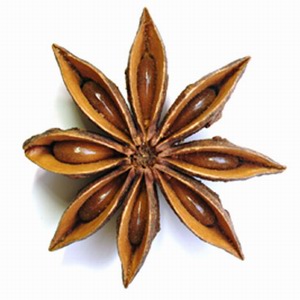 | | Fruits | 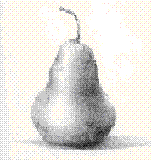
| Beans / Seeds
| 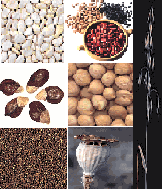
| Lettuces
|  | Vegetables
| 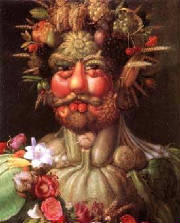 | Beverages
|  | | |
|
 |
|

